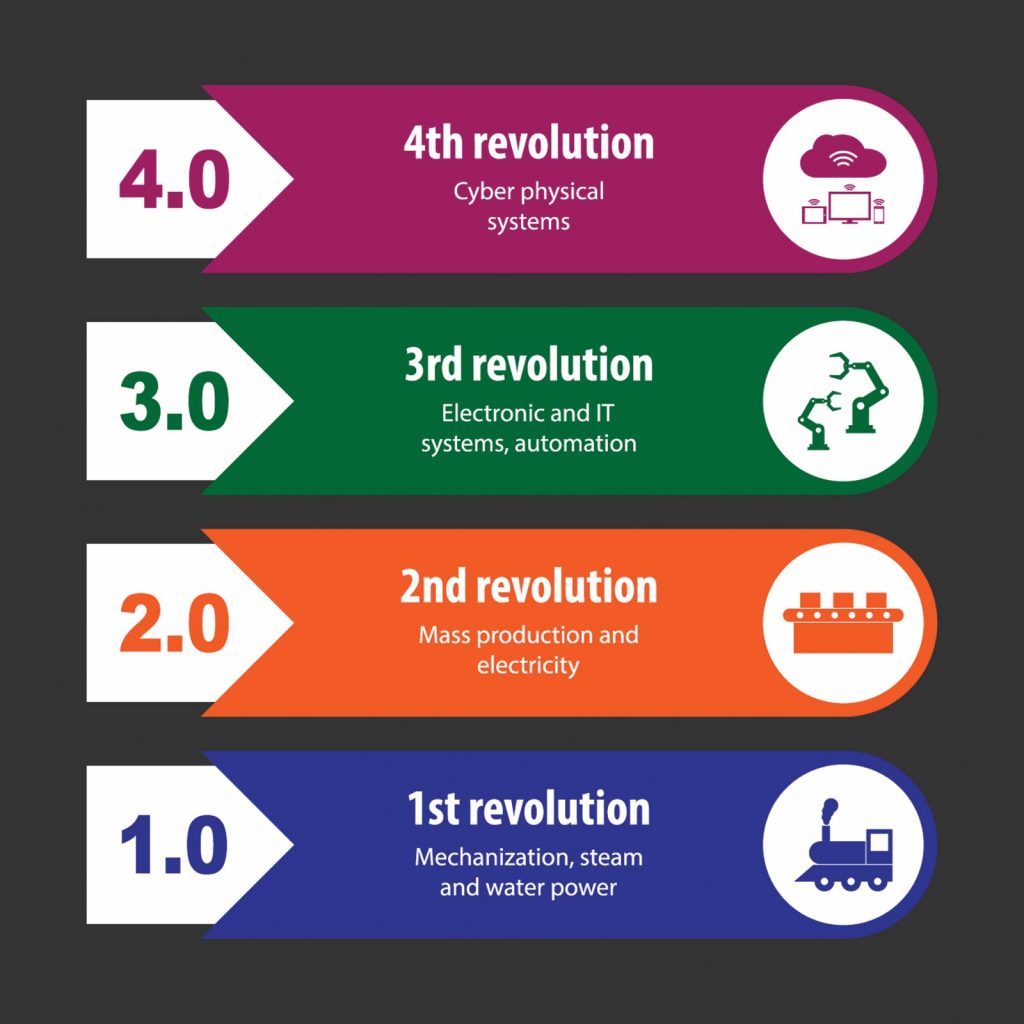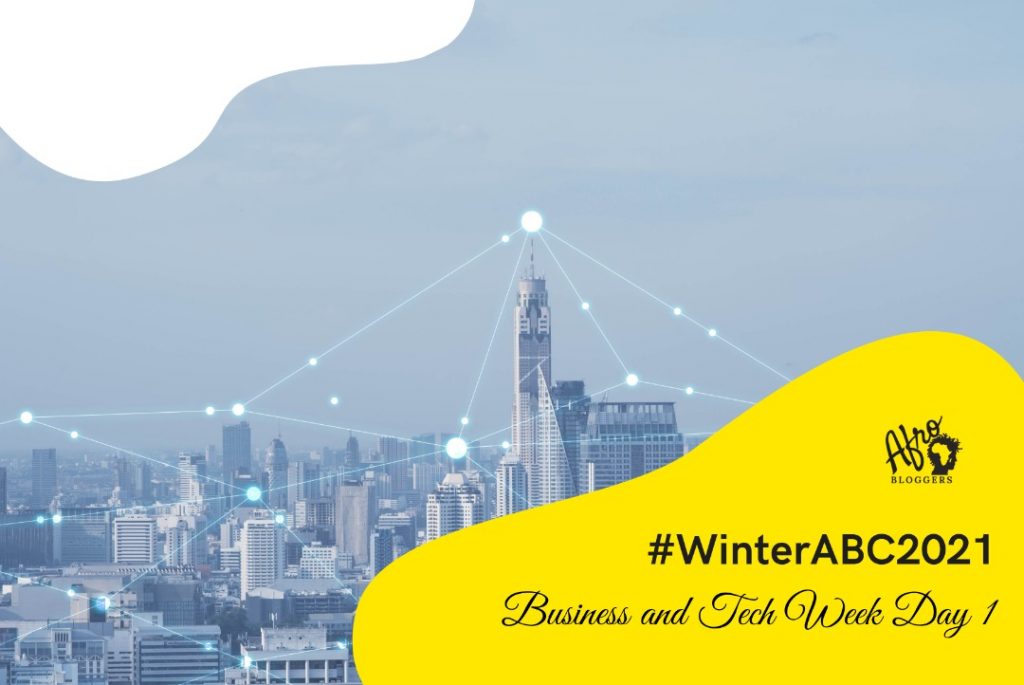Right from the 18th century the world has been experiencing industrial revolutions that impact the world’s economic status in a very profound way. Towards the end of the 18th century in 1784, the world received it’s very first industrial revolution with the emergence of steam powered factories. The second industrial revolution happened in the 19th century in 1870 where we got to see the application of science to mass production and manufacturing. Things like an assembly line was invented and the industrial sector speeded up exponentially. The third industrial revolution came in the 20th century in 1969 with advances in computing that led to machine programming. This opened the door to progressive automation. Now the 21st century has seen the emergence of the fourth industrial revolution in 2016 which is building on the third, comes with the fusion of these technologies and their interaction across the physical, digital and biological domains. The Fourth Industrial Revolution’s technologies, such as artificial intelligence, genome editing, augmented reality, robotics, and 3-D printing, are rapidly changing the way we create, exchange, and distribute value.

The technologies of the fourth industrial revolution include the following;
Artificial intelligence – this is the combination of algorithms formulated with the purpose of creating machines that have the same skills as a human being. Although this technology still seems to be distant and mysterious, there is a sure constant presence in our day-to-day lives for some years now. Look at robots, facial recognition features in phones now, virtual voice assistants like Siri to mention but a few. A.I is slowly but surely taking shape.
Internet of things – Studies show that more than 8 billion devices are connected to the Internet of Things (IoT) and this figure is set to triple in the coming years. With this we are already seeing new technologies making possible traffic flow analysis, programmable signaling, car park sensors; connected appliances, voice assistants, remote surveillance via mobile in homes all made possible by Internet of Things.
Cobots – We are increasingly seeing that robots and humans can work together like colleagues thanks to the boom in collaborative robots. The use of cobots in industry is changing production processes because unlike industrial robots, they work efficiently, safely and skillfully with other employees on all types of tasks. Experts tell us that cobots share jobs with operators, collaborating, manoeuvring and interacting with them. They are not intended to replace humans, rather become their bodyguards. These machines release operators from dangerous, repetitive and burdensome tasks, reducing absence due to illness and occupational illnesses which has always affected work and production. They also have sensors that detect human presence and react, for example by slowing down to protect humans from injury. We all know countless people who have lost body parts and even lives trying to get their work done. I believe there is a sigh of relief in that area.
Augmented reality and virtual reality – This is a technology that allows virtual elements to be superimposed onto our vision of reality. Through this technology surgery now can be done in detail, you may yourself how? Through tablets or holographic glasses, doctors can visualise organs in 3D or consult the patient’s history before or during a surgical intervention. Runners, cyclists, mountaineers, and hiking enthusiasts can now explore their routes in 3D by projecting them into any surface allowing them to plan their next adventures and share their activities. In architecture, companies can now use artificial reality to enable clients check in real time how their house will look once the work is completed or how their furniture will fit in with the rest of the decor. From trying on clothes virtually to watching an interactive campaign on a wall in the middle of the street, the sales and promotion potential offered by artificial reality to brands is incalculable. Are you seeing how to position your business already?
Big data – Nowadays, over 6,500 million connected devices share information over the Internet and now with the COVID pandemic forcing everyone to work more from home, this figure has most definitely shot up. So big data analyses this “sea of data” to convert it into the information that is transforming our world. Big data is the set of technologies created to store, analyse and manage this bulk data. To break down this a little further, I will give some examples; GPS systems can detect traffic jams in the area checked by a user and suggest alternatives; a subscription streaming TV channel has created the characters and plot of its most successful series by analysing the contents its viewers consume and prefer to watch; smart watches monitor the heart rate of millions of users and identify patterns that can anticipate to and prevent cardiovascular diseases; humidity sensors in crop fields plan the irrigation frequency, combining their data with the weather forecasts, should I continue? Is this something you can make use of? How are you dealing with data at your disposal? Are you still piling box files in your stores?
3D and 4D printing – 4D printing uses 3D printers to create live three dimensional objects without wires or circuits. It does so by using intelligent materials, which can be programmed to change shape, colour or size when they receive an external stimulus. Intelligent designs that adapt to the environment and transform over time is the highlight of this technology. Clothes that adapt to weather conditions, furniture that assembles itself when taken out of the box, pipes that regulate their width according to the flow, prostheses that adapt to growth and disintegrate once they are no longer needed are just some of the present and future applications of 4D printing. 4D printing makes it possible for an object, to bend, repair, assemble or even disintegrate itself. It acquires a new shape or functionality on its own by reacting with the environment. How interesting can the fourth Industrial revolution get!!!!
On the whole, there are four main effects that the Fourth Industrial Revolution has on business; that is, on customer expectations, on product enhancement, on collaborative innovation, and on organizational forms. Whether consumers or businesses, customers are increasingly at the epicenter of the economy, which is all about improving how customers are served. Physical products and services, moreover, can now be enhanced with digital capabilities that increase their value. New technologies make assets more durable and resilient, while data and analytics are transforming how they are maintained. A world of customer experiences, data-based services, and asset performance through analytics, meanwhile, requires new forms of collaboration, particularly given the speed at which innovation and disruption are taking place. And the emergence of global platforms and other new business models, finally, means that talent, culture, and organizational forms will have to be rethought. The onus is now on everyone to see how to position oneself appropriately for this revolution in whatever sector of life you are in, be it business, product or service provision. Do not be left behind, it might be too late to catch up.

eeeeeehhh we are trying to position ourselves
That is a sure thing
A.I is slowly but surely taking shape.
So true
An area i should task myself to study about
Please do share your findings. Thank you for reading
Now, I am against every one of your breakdowns
Let’s discuss, why?
Learnt a lot from this
Tech is taking over a lot of things!
Couldn’t agree more. Thank you
Whooosh alot of learning.
Time to position me.
Thanks for sharing
Baby steps, can’t wait to see you there
Hey there I am so glad I found your web site,
I really found you by mistake, while I was browsing on Digg for something
else, Nonetheless I am here now and would just like to say kudos for a remarkable post and a all round enjoyable
blog (I also love the theme/design), I don’t have time to
browse it all at the minute but I have saved it and
also added your RSS feeds, so when I have time I will be back
to read a great deal more, Please do keep up the excellent b.